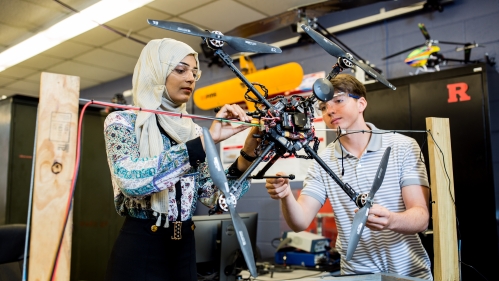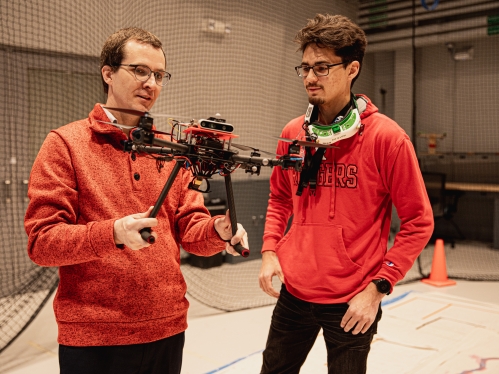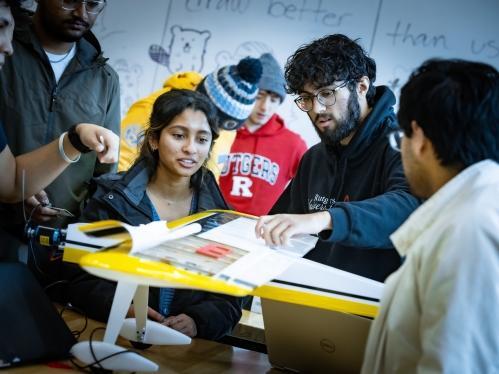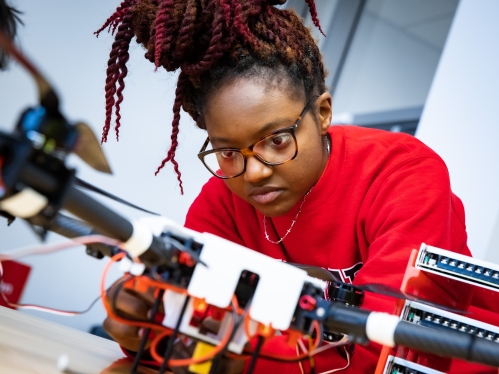
Aerospace Engineering Undergraduate Program
What is Aerospace Engineering
Unmanned aerial systems, airplane and space vehicle design, propulsion, flight technology, aerodynamics and astrodynamics, aerospace materials and structures, aerospace modeling and simulations, and sensing and control of aerospace systems are all components of our aerospace engineering degree.
Program Overview
The aerospace engineering program at Rutgers provides a broad and multi-disciplinary education in the fundamentals of aircraft and spacecraft design. Rutgers is currently the only public university in New Jersey offering an aerospace engineering degree.
The program offers multiple degree options for students, including: a BS and a BS/MS Five-Year Dual Degree.
The department also offers an energy systems concentration. Students completing the requirements for this concentration receive a certificate in addition to their aerospace engineering diploma.
The aerospace engineering program highlights include:
- Rutgers is one of six FAA-designated test sites for advancing the integration of drones into national airspace.
- Emil Buehler Aerospace Lab is a two-story testing space for drones and aerospace projects.
- Faculty members include aerospace engineering experts.

Coursework
The aerospace degree program includes courses in spacecraft mission design, propulsion, mechanical control systems, system dynamics and controls, orbital mechanics, and power plants, among others. Proactive learning opportunities utilize classroom studying in applications and design, leading to a final aerospace design project in the senior year.

Hands-on Experience
Rutgers' aerospace engineering students utilize proactive learning opportunities and classroom studying in applications and design.
The departments highlights include:
- Year-long aerospace capstone design experience includes students working in teams to conceptualize, design, and manufacture aerospace system prototypes.
- Research and teaching facilities include the state-of-the-art Buehler Supersonic Wind Tunnel and desktop and standalone subsonic wind tunnels.
- Build autonomous and wired controls, robotic systems, and unmanned aerial vehicles
- Active flight control, computational simulations of aerospace structures, propulsion, computational flow dynamics and visualization, autonomous control, lunar and Martian habitats, flexible robotic mechanisms, aerial micro vehicles, control and flight characteristics of high-speed vehicles, space situation awareness, air and water autonomous vehicles, material systems for aerospace structures, and lightweight multifunctional materials.



